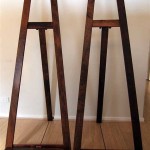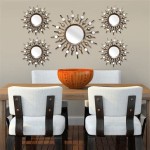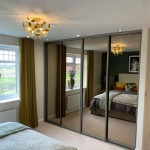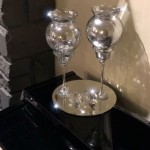Why Convex Mirrors Cannot Produce Real Images
Convex mirrors, characterized by their outwardly curved reflecting surface, possess distinct optical properties that prevent them from forming real images. Understanding these properties requires an examination of light behavior, reflection laws, and the principles of image formation.
Divergence of Reflected Rays
The fundamental reason convex mirrors cannot produce real images lies in the way they reflect incident light. Parallel light rays striking the curved surface are reflected outwards, diverging away from each other. This divergence is a direct consequence of the mirror's shape. Each point on the surface acts as a tiny plane mirror oriented at a slightly different angle. Because the surface curves outward, these angles cause the reflected rays to spread apart.
This diverging reflection contrasts sharply with the behavior observed in concave mirrors, where incident parallel rays converge to a focal point. Convergence allows for the intersection of reflected rays, a prerequisite for real image formation. Since convex mirrors cause divergence, their reflected rays never intersect in real space. Instead, they appear to emanate from a point behind the mirror.
Virtual Image Formation
While convex mirrors cannot form real images, they do produce virtual images. A virtual image is formed when reflected rays do not actually intersect but appear to diverge from a point behind the mirror's surface. The human eye, interpreting light along straight paths, traces these diverging rays back to their apparent origin, creating the illusion of an image located behind the mirror.
These virtual images are always upright, diminished in size compared to the object, and located within the focal length of the mirror. The precise location and size of the virtual image depend on the object's distance from the mirror and the mirror's curvature radius. The greater the object's distance, the smaller and closer to the focal point the virtual image appears.
Implications for Image Processing
The inability of convex mirrors to generate real images has significant implications for image processing applications. Real images are essential for many optical systems, including projectors, cameras, and telescopes. These systems rely on the ability to collect and focus light onto a sensor or screen to create a tangible image. Since convex mirrors cannot focus light in this manner, they are not suitable for these applications.
However, the unique properties of convex mirrors, specifically their ability to create a wide field of view, are advantageous in other contexts. The diverging reflection allows a convex mirror to reflect light from a broader area than a similarly sized plane mirror. This characteristic makes convex mirrors valuable for security purposes, allowing observers to monitor a larger area with a single mirror. They are also used in vehicle side mirrors to provide drivers with an expanded view of their surroundings.
Mathematical Description of Convex Mirror Reflection
The behavior of light reflecting off a convex mirror can be described mathematically using the mirror equation: 1/f = 1/do + 1/di. Where 'f' represents the focal length (which is negative for convex mirrors), 'do' represents the object distance, and 'di' represents the image distance. Since 'f' is negative, the image distance 'di' will always be negative, indicating a virtual image located behind the mirror.
Furthermore, the magnification (M) of the image is given by M = -di/do. A negative magnification confirms that the image is upright and virtual. The absolute value of M being less than 1 signifies the diminished size of the virtual image.
Contrast with Concave Mirrors
In contrast to convex mirrors, concave mirrors possess an inwardly curved reflecting surface. This shape allows concave mirrors to converge parallel incident rays to a focal point. Consequently, concave mirrors can form both real and virtual images depending on the object's position relative to the focal point. When the object is located beyond the focal point, a real, inverted image is formed. When the object is within the focal length, a virtual, upright, and magnified image is formed.
This fundamental difference in light reflection and image formation capabilities highlights the distinct optical properties of convex and concave mirrors and their respective applications.
Can Convex Mirrors Ever Produce Real Images Inverted Magnified Quora
Can A Convex Mirror Form Real Image Quora
Why Do Plane Mirrors And Convex Form Only Virtual Images Quora

Solved Ysis 1 Can A Convex Mirror Produce Real Images Chegg Com
Can Convex Mirrors Ever Produce Real Images Inverted Magnified Quora
Can Convex Mirrors Ever Produce Real Images Inverted Magnified Quora

Convex Mirror Image Formation Conditions Ray Diagram Uses

Convex Mirror Image Formation Conditions Ray Diagram Uses
How Do Reflections From Convex Mirrors Make Objects Appear Smaller Quora
When Does A Plane Mirror Produce Real Image Quora








